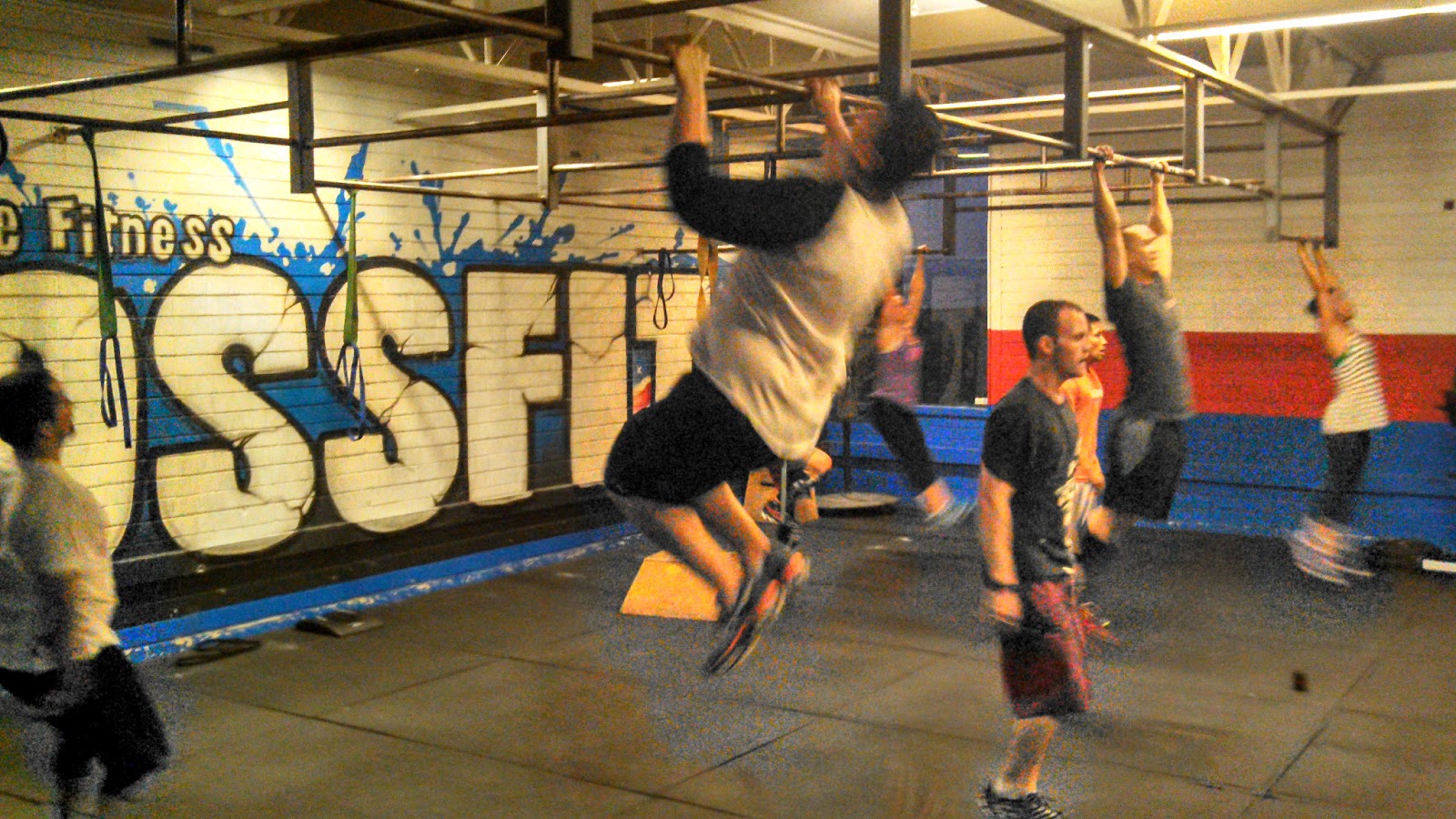10 min EMOM
10 T2B
10 Push Ups
------------------
3 DL + 3 Hang Power Cleans
+ 3 Shoulder to Overhead
(Complex completed as heavy as possible)------------------
5 Rounds
8-10 Strict Pull Ups
6 Shoulder Press
Rest 90 Seconds
Evidence of Brian working hard :)
Videos of Barbell Complex:
Reggie, Frank:
http://youtu.be/LxlOpTRJvHA
Brian, Alex, Victor: http://youtu.be/2CGGT8fUQF8
Jeni, Mitch: http://youtu.be/KPZmXQzLqEM









